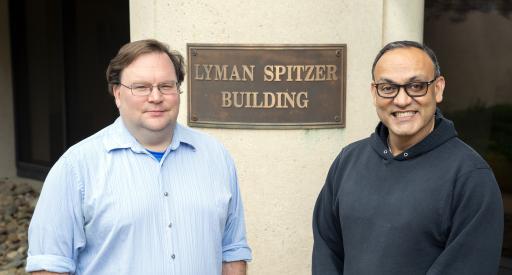Beryllium, a hard, silvery metal long used in X-ray machines and spacecraft, is finding a new role in the quest to bring the power that drives the sun and stars to Earth. Beryllium is one of the two main materials used for the wall in ITER, a multinational fusion facility under construction in France to demonstrate the practicality of fusion power. Now, physicists from the U.S. Department of Energy’s (DOE) Princeton Plasma Physics Laboratory (PPPL) and General Atomics have concluded that injecting tiny beryllium pellets into ITER could help stabilize the plasma that fuels fusion reactions.
Experiments and computer simulations found that the injected granules help create conditions in the plasma that could trigger small eruptions called edge-localized modes (ELMs). If triggered frequently enough, the tiny ELMs prevent giant eruptions that could halt fusion reactions and damage the ITER facility.
Scientists around the world are seeking to replicate fusion on Earth for a virtually inexhaustible supply of power to generate electricity. The process involves plasma, a very hot soup of free-floating electrons and atomic nuclei, or ions. The merging of the nuclei releases a tremendous amount of energy.
In the present experiments, the researchers injected granules of carbon, lithium, and boron carbide — light metals that share several properties of beryllium — into the DIII-D National Fusion Facility that General Atomics operates for the DOE in San Diego. “These light metals are materials commonly used inside DIII-D and share several properties with beryllium,” said PPPL physicist Robert Lunsford, lead author of the paper that reports the results in Nuclear Materials and Energy. Because the internal structure of the three metals is similar to that of beryllium, the scientists infer that all of these elements will affect ITER plasma in similar ways. The physicists also used magnetic fields to make the DIII-D plasma resemble the plasma as it is predicted to occur in ITER.
These experiments were the first of their kind. “This is the first attempt to try to figure out how these impurity pellets would penetrate into ITER and whether you would make enough of a change in temperature, density, and pressure to trigger an ELM,” said Rajesh Maingi, head of plasma-edge research at PPPL and a co-author of the paper. “And it does look in fact like this granule injection technique with these elements would be helpful.”
If so, the injection could lower the risk of large ELMs in ITER. “The amount of energy being driven into the ITER first walls by spontaneously occurring ELMs is enough to cause severe damage to the walls,” Lunsford said. “If nothing were done, you would have an unacceptably short component lifetime, possibly requiring the replacement of parts every couple of months.”
Lunsford also used a program he wrote himself that showed that injecting beryllium granules measuring 1.5 millimeters in diameter, about the thickness of a toothpick, would penetrate into the edge of the ITER plasma in a way that could trigger small ELMs. At that size, enough of the surface of the granule would evaporate, or ablate, to allow the beryllium to penetrate to locations in the plasma where ELMs can most effectively be triggered.
The next step will be to calculate whether density changes caused by the impurity pellets in ITER would indeed trigger an ELM as the experiments and simulations indicate. This research is currently underway in collaboration with international experts at ITER.
The researchers envision the injection of beryllium granules as just one of many tools, including using external magnets and injecting deuterium pellets, to manage the plasma in doughnut-shaped tokamak facilities like ITER. The scientists hope to conduct similar experiments on the Joint European Torus (JET) in the United Kingdom, currently the world’s largest tokamak, to confirm the results of their calculations. Says Lunsford, “We think that it’s going to take everyone working together with a bunch of different techniques to really get the ELM problem under control.”
Support for this work comes from the DOE’s Office of Science.
PPPL, on Princeton University’s Forrestal Campus in Plainsboro, N.J., is devoted to creating new knowledge about the physics of plasmas — ultra-hot, charged gases — and to developing practical solutions for the creation of fusion energy. The Laboratory is managed by the University for the U.S. Department of Energy’s Office of Science, which is the single largest supporter of basic research in the physical sciences in the United States and is working to address some of the most pressing challenges of our time. For more information, visit https://energy.gov/science(link is external)
The DIII-D National Fusion Facility is the largest magnetic fusion research facility in the U.S. and has been the site of numerous pioneering contributions to the development of fusion energy science. DIII-D continues the drive toward practical fusion energy with critical research conducted in collaboration with more than 600 scientists representing over 100 institutions worldwide. For more information, visit www.ga.com/diii-d(link is external).


